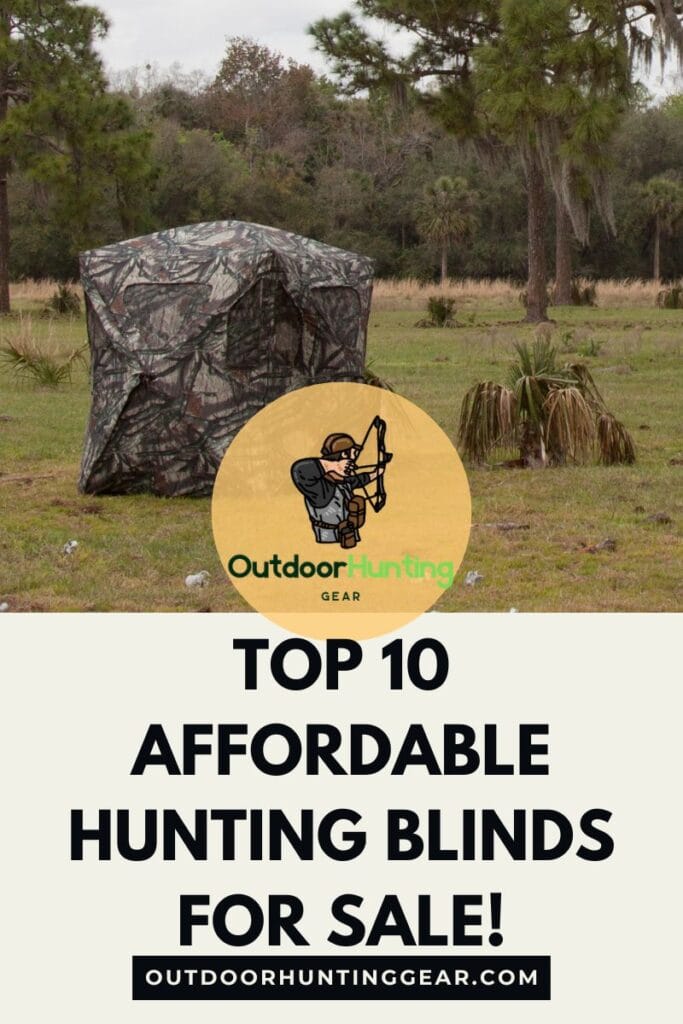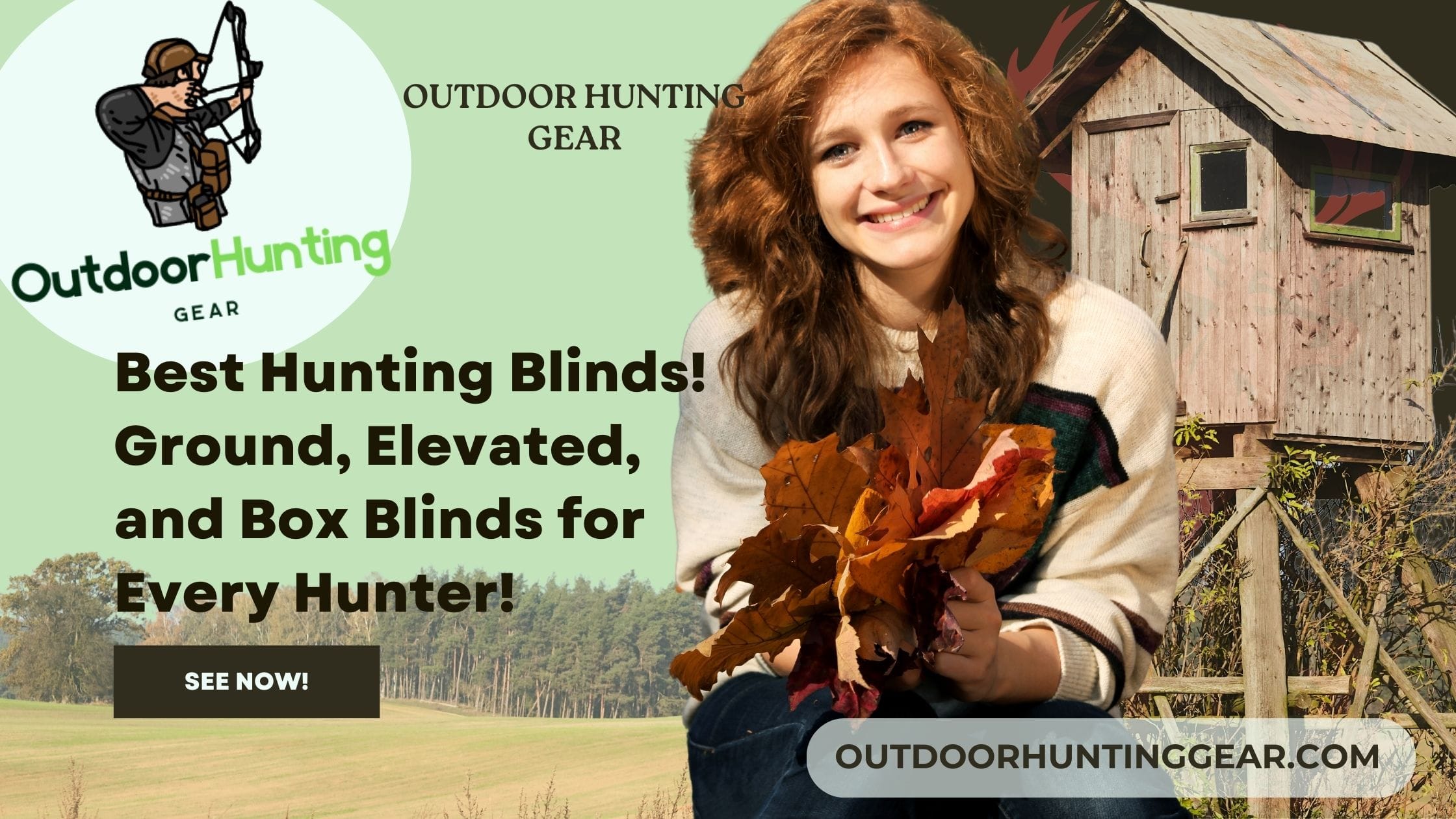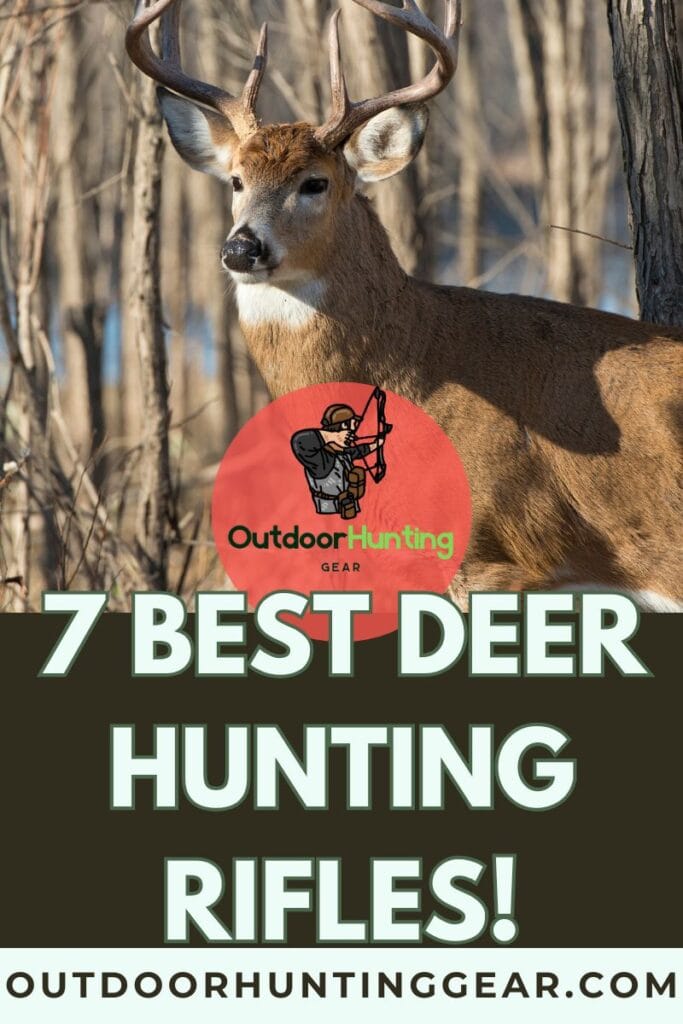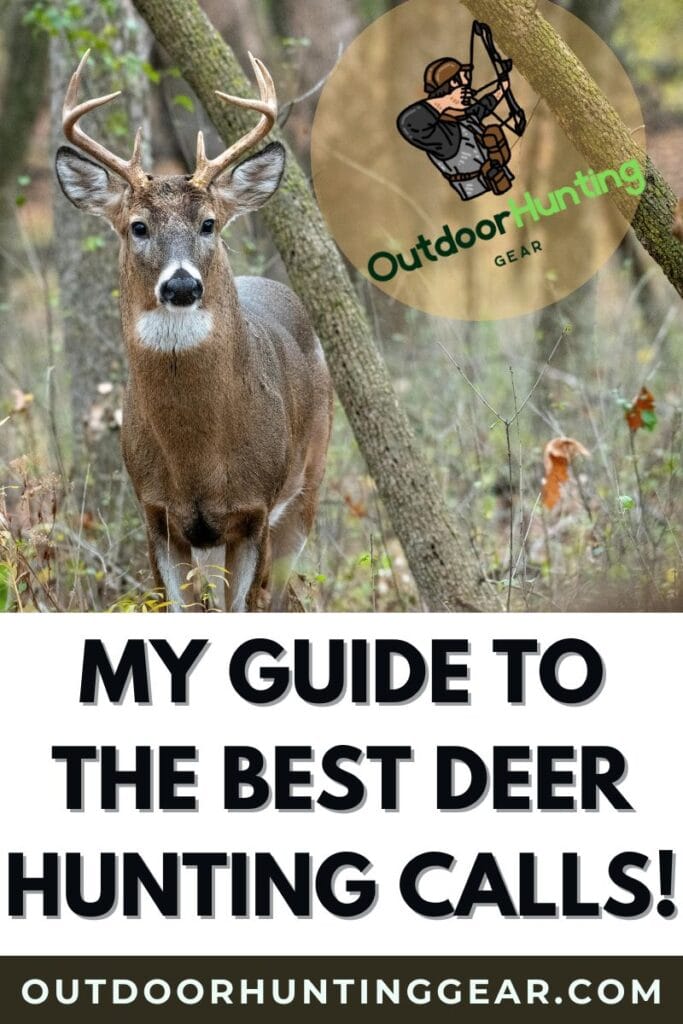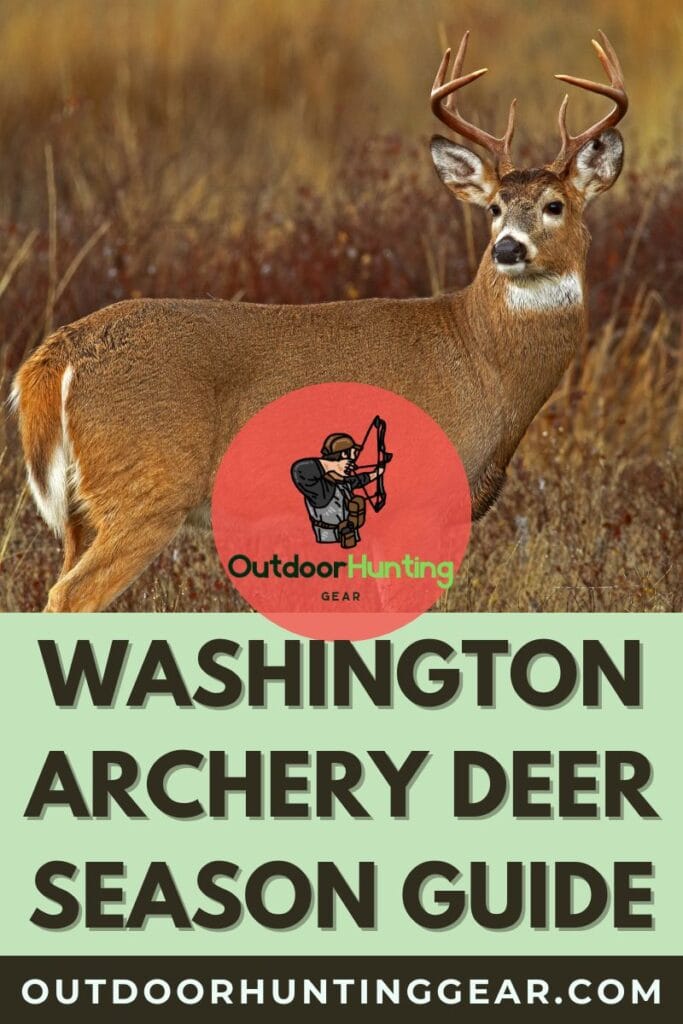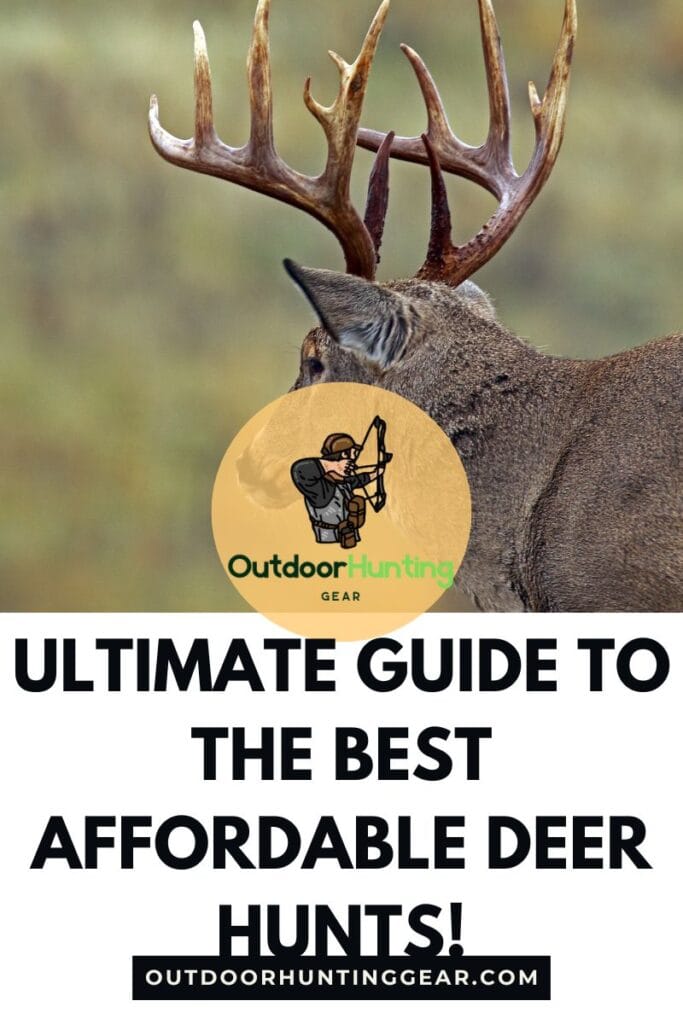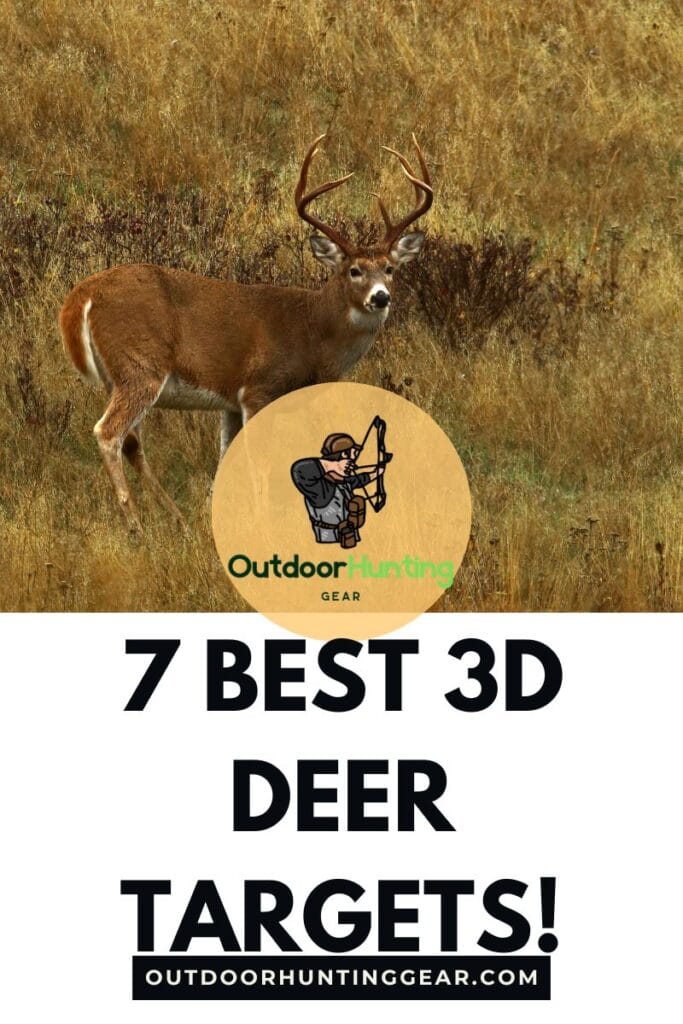Discover everything you need to know about hunting blinds, including ground blinds, elevated hunting blinds, box blinds, and more. Learn how to choose the best hunting blind for your setup, with tips on materials, sizes, and where to buy.
As a hunter who spends countless hours in the field, I can tell you that the right hunting blind is one of the most valuable tools in your hunting arsenal. Whether you’re chasing whitetail deer, turkeys, or any other game, a hunting blind provides essential concealment, keeping you hidden while you wait for the perfect shot.
From ground blinds to elevated deer blinds, there’s a wide variety of options out there. So, how do you choose the best hunting blind for your next hunt?
In this guide, I’ll walk you through the ins and outs of hunting blinds, discussing different types, materials, features, and where to buy the best blinds. Let’s dive in.
What Are Hunting Blinds?
Simply put, hunting blinds are structures designed to hide you from game. They allow you to blend into your environment, giving you the upper hand when stalking deer or other wildlife. Blinds range from simple camouflage netting to advanced box blinds or tower hunting blinds, offering full protection from the elements.
Blinds can be classified into two main categories: ground blinds and elevated hunting blinds. Each type has its unique benefits, and selecting the right one will depend on your hunting environment, target species, and personal preferences.
Ground Blinds for Deer Hunting: Concealment at Eye-Level
Ground blinds are a popular option for hunters who prefer to stay close to the ground. They’re great for a variety of game species and provide excellent concealment while giving you quick and easy access to your hunting spot.
Whether you’re setting up on the edge of a field or deep in the woods, a good ground blind can blend in perfectly with its surroundings.
One of my go-to setups is the plastic hunting blinds or even a camouflaged fabric blind for lightweight portability. I’ve found that brands like Hawk and Banks Outdoors offer some fantastic options when it comes to durable, effective ground blinds for deer hunting.
Here are some key features to look for in ground blinds:
- Material: Choose a durable material like polyethylene or camo fabric that can withstand the elements.
- Size: A standard size like 5×5 can comfortably fit you and your gear.
- Portability: Lightweight and easy to carry, essential for hunters who move frequently.
Ground blinds are ideal for those who hunt on foot or need to relocate frequently. They also offer an enclosed environment that can provide some cover from weather conditions. If you’re hunting during early morning hours or late in the evening, a ground blind will help minimize your scent and movement, keeping you undetected.
Elevated Hunting Blinds: The Best View for Deer Hunting
For those who prefer a higher vantage point, elevated hunting blinds are the way to go. These blinds are built on platforms that elevate the hunter several feet off the ground, giving you a wide, unobstructed view of your hunting area.
One of the advantages of elevated hunting blinds, particularly box blinds or tower hunting blinds, is that they allow you to see further and reduce your scent profile, making it harder for deer to detect you. If you’re hunting in areas with open fields or dense woods, an elevated deer stand gives you the best of both worlds: better visibility and concealment.
I’ve had great success using box blinds from brands like Dillon Manufacturing and Sad Daddy Hunting Blinds. Their durable construction and weather-resistant materials, like HDPE plastic and aluminum, are ideal for long hunting sessions.
Consider these factors when choosing an elevated deer blind:
- Height: A platform of around 12-14 feet is typical for deer hunting, but depending on your location, you might want to go higher or lower.
- Durability: Blinds made from HDPE plastic or treated wood can handle the elements over the long term.
- Size: Blinds like 5×5 are spacious enough to accommodate you and a friend or extra gear.
When you’re perched in an elevated deer blind, you have the advantage of seeing game approach from a distance, giving you time to plan your shot. Plus, you’ll stay out of the deer’s line of sight and reduce the chance of them picking up your scent.
Types of Hunting Blinds
Now that we’ve covered the basics of ground blinds and elevated deer blinds, let’s look at some of the most common types of hunting blinds you’ll find on the market:
Box Blinds
Box blinds are essentially small sheds that offer complete coverage and protection. They’re perfect for longer hunts, especially in colder weather, as they shield you from the elements. I often use box blinds during extended deer seasons because of the comfort they provide.
Key features of a good box blind:
- Full coverage from wind, rain, and snow.
- Shooting windows on all sides, ensuring a full range of shooting angles.
- Roomy interior, typically 5×5 or larger.
Box blinds come in a variety of materials, from wood hunting blinds to plastic deer blinds. If you’re looking for a more permanent setup, a box blind on a sturdy platform, like the Deer Stand Platform from Banks Outdoors, is an excellent investment.
Tree Blinds
For those who enjoy the challenge of a more natural approach, tree blinds offer concealment directly in a tree or elevated structure. Tree stand blinds provide excellent cover in forested areas and can be camouflaged with natural elements like tree branches. Look for blinds made with HDPE plastic for durability in all weather conditions.
How to Choose the Best Hunting Blind
When choosing a hunting blind, there are several factors to consider to ensure you’re getting the right setup for your needs.
1. Blind Size
Your blind size will depend on how many people or how much gear you plan to accommodate. If you hunt solo, a smaller 5×5 blind may be perfect, while larger blinds offer room for multiple hunters or extra equipment.
2. Materials
For durability, go for materials like polyethylene or aluminum. They offer better protection against weather conditions and tend to last longer than cheaper fabric blinds.
3. Platform Height
If you opt for an elevated blind, consider the platform height. A tower height of around 12 feet works well in most situations, but you may want a higher platform for open fields.
4. Accessibility
Look for features like full-size doors or midsize doors, especially if you’re hauling in gear or if you prefer a roomier entrance.
Where to Buy Deer Hunting Blinds
When you’re ready to purchase your hunting blind, there are plenty of places to find high-quality options.
Some of my personal favorites for finding deer blinds for sale include:
Banks Outdoors
Known for durable and reliable blinds, perfect for both elevated and ground setups.
Gear Guide
Offers tower hunting blinds and box blinds that are built to last, made from tough materials like HDPE plastic and aluminum.
Hawk
Specializes in versatile, lightweight hunting blinds that are easy to set up and move.
CROSS MARS
A solid choice for both permanent and mobile setups with a focus on durability and comfort.
You can also find cheap hunting blinds through seasonal sales, clearances, and online listings. It’s worth keeping an eye out for deals, especially during the off-season.
Hunting Blinds Frequently Asked Questions (FAQs)
The best materials are weather-resistant and durable, such as polyethylene for ground blinds and HDPE plastic or aluminum for box blinds. These materials stand up to wind, rain, and snow, ensuring your blind lasts for many seasons.
The ideal height for an elevated deer stand is around 12-14 feet. This height offers a great view without being too high for a safe shot. However, depending on your hunting area, you might choose higher or lower platforms.
Most blinds come in camouflage patterns, but you can enhance your concealment by using natural materials like tree branches, leaves, and grass. Look for blinds with greylight features or custom paint jobs like green 22 or tan 14 for better blending into your environment.
Yes, box blinds provide full coverage from the elements, making them ideal for extended hunts. They offer more comfort, room, and protection compared to open blinds.
By considering these tips, you’ll be well on your way to selecting the perfect hunting blind for your needs. Remember, the key is to find something that fits your hunting style, target game, and environment.
